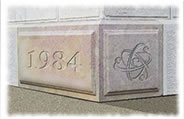What is Culture?
What is culture, but the way we live — together?
Culture is defined by the things we do together, and the ways in which we do them “in the commons.” Some things are accepted, and acceptable. Others aren’t. First we experiment, then we form personal habits which morph into shared customs, then – over time… “Culture.”
At some point in our Greek history, there was a really good, well-accepted way to build a temple. It “caught on.” Influences our railway stations to this day. Of course, the available resources and tools contributed — and they became part of the very culture which they defined and constructed. “There’s a tool for that!” has evolved: “There’s an App for that!”
The most obvious ways we recognize previous cultures are the things that remain: fossils, coins, structures, language, stories — myths. Cultures change slowly, owing to the large populations involved, and the time required for tools, technologies, languages and construction (budgets and methods) to evolve and transform.
Greek culture is different from Italian culture. New York Culture is different from that of Los Angeles. There is regional culture and national culture. There’s family culture and corporate culture. Distinctive customs, language, tools, styles, manners and values.
Your distinct corporate Culture may be your most valuable and overlooked asset.
Consider the following:
Are your products distinctly different from the competition?
Are your people dramatically different?
Are your returns impeccable?
Are your clients unusual?
So perhaps the most leverageable distinctions you possess are the clarity with which you communicate, the energy of your sales team, the dedication and caring of your managers, the commitment, intelligence and strategic insight of your leaders, the intensity of your fire, the loftiness of purpose — in short, the cultural cornerstones which set your firm apart from all others. It’s the culture!
In a world of “me too” products, companies and services, it’s the culture which sets you apart. Careful. It’s an unseen, intangible asset — and prone to being dismissed, diminished or confused by analytical, practical thinkers. Yet this invisible intangible is the foundation upon which the tangibles rely for their origins, their stability and their integrity. All sales begin with a belief and a story. All profit statements begin with a financial strategy. All continuing relationships begin with trust — based on a reputation.
You may be asking, “How do I turn this intangible into a tangible benefit?”
It starts with stories and symbols.
Bring the group together and decide what you stand for, what you believe, how you’ll work, who your clients are, what will distinguish you? Build those ideas, concepts and principles into belief statements, positioning documents and stories.
Don’t change the stories. Keep telling them. Live with them. Live by them.
When your employees start conducting day to day business in alignment with your stories, you will have achieved a short term corporate culture.
When your clients, your customers and the market start repeating your stories back to you, you will have achieved an authentic, organic brand.
When the stories are still told after you retire, you will have created a legacy.
Subscribe to our Newsletter


